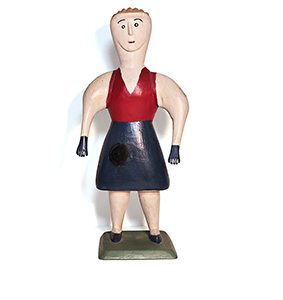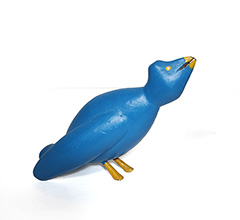(1904 - 1982)
 Charlie Tanner started working on a fishing schooner at age 13, and later was involved in the movement of alcohol from St. Pierre to New York state. He eventually bought his own small fishing boat and earned a living from inshore fishing.
Charlie Tanner started working on a fishing schooner at age 13, and later was involved in the movement of alcohol from St. Pierre to New York state. He eventually bought his own small fishing boat and earned a living from inshore fishing.Charlie started carving when he retired in 1974, and had developed the distinctive style, by which his carvings are readily recognized, by 1975. Discovered by Chris Huntington, an antique dealer from Maine, Charlie Tanner s work is among the most distinctive art to surface in Nova Scotia during the 20th century. As Huntington stated in the essay he provided for the catalogue of the 1984 Charlie Tanner Retrospective at the Art Gallery of Nova Scotia Handicaps of limited education and experience, briefness of career, problems of ill health or restrictions in god-given skills are the confines that the work rises above. If we are sensitive in reading the work, if we allow time from our too busy world to let this work have its space, it will stand forth to speak for Charlie and the world he created it from.
Charlie Tanner's work is included in the collections of the Art Gallery of Nova Scotia, the Canadian Museum of Civilization, and many private collections throughout North America.
Ref: Marie Ellwood, Folk Art of Nova Scotia (1976); A.G.N.S., Charlie Tanner Retrospective (1984); Kobayashi/Bird, A Compendium of Canadian Folk Artists (1985); A.G.N.S., Nova Scotia Folk Art - Canada's Cultural Heritage (1989); Blake McKendry, An Illustrated Companion to Canadian Folk Art (1999), Bernard Riordon (Beaverbrook Gallery), Canadian Folk Art from the Collection of Susan A. Murray (2007); Ray Cronin, Nova Scotia Folk Art: An Illustrated Guide (2024).



